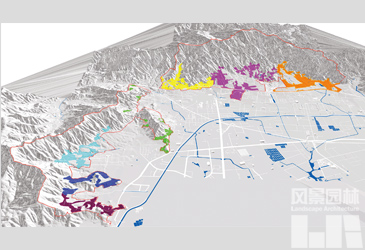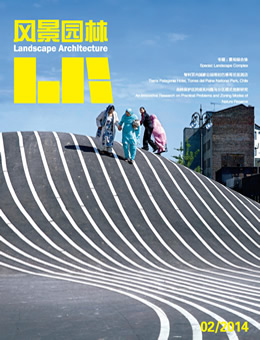郑曦 马璐璐
ZHENG Xi MA Lu-lu
摘要:面对当代快速城市化进程,景观所承载的功能、内涵与价值对于城市而言,已经超越了仅仅作为简单的风景式背景和功能较为单一绿地类型的理解,而是作为综合体,成为城市发展的推动力。景观综合体提供了一种针对当代景观和城市关系认知的视角,和一种表述这种关系的语汇与工具。作为城市发展的媒介,景观综合体承载城市功能,并通过协调与重组资源,促进城市生长,成为城市结构的重要组成部分。通过对历史的回溯与经验借鉴,结合当代发展,归纳总结出景观综合体的特征:开放与战略性,渗透与弹性,整合与控制性;探讨了景观综合体构建的4种途径:功能转换,尺度拓展,资源配置,数据驱动,并结合案例进行了分析。
关键词:城市设计;景观综合体;景观都市主义;城市发展;媒介
Abstract: Facing the current rapid urbanization, as far as city is concerned, the functions, meanings and values of landscape have gone beyond the original understanding merely as simple scenic background and single functional greenbelt. Instead, landscape as complex, has become urban development impetus. Landscape complex is a kind of cognitive perspective or lens for the relationship between the contemporary urban landscape and urbanism; it is also a kind of rhetoric or approach to express the relationship. As a medium for urban development, landscape complex carries the urban functions and promotes urban growth by coordinating and restructuring the resources, becoming an important part of the urban fabric. Through analyzing the historical cases and the features of contemporary development, this paper summarizes the characteristics of landscape complex: openness and strategics, penetration and flexibility, integration and controllability. The paper also explores four approaches for landscape complex establishment with cases study: functional transformation, scale expansion, resource reallocation, and data-driven.
Key Words: Urban Design; Landscape Complex; Landscape Urbanism; Urban Development; Medium
1 景观综合体——城市发展的媒介
面对当代快速城市化进程出现的环境危机,区域景观风貌的迅速变化,以及经济、人口与生活方式的巨大改变,景观所承载的功能、内涵与价值对于城市而言,已经超越了仅仅作为简单的风景式背景和功能较为单一绿地类型的理解,而是以综合性的处理方式成为城市空间与形态塑造的推动力[1],这类作为综合体的景观,构成了城市发展的媒介。景观综合体成为处理当代城市密度增大、资源减少与环境恶化的有效手段。
(1)综合性是景观的重要特征,把“景观”与“综合体”合在一起使用,是强调景观在应对日益复杂的场地问题中,所具有的整合多层次、多样的复杂城市功能,协调人工与自然要素的综合能力。
景观综合体不是规划设计方法,而是希望提出一种针对当代景观和城市发展关系认知和分析的视角,并作为一种表述这种关系的语汇与工具,或者说是区别于花园设计、功能较为单一绿地设计的不同类型。
(2)景观综合体是城市发展的重要媒介。选择使用“媒介”,是强调在作为城市背景的同时,景观本身是动态的,具有渗透性和可见性的特点,而与“容器”、“载体”等词汇更趋向于静态的、不具渗透性、不可见的特征相区别。
作为城市发展的媒介,景观综合体承载城市功能,并通过协调与重组资源,促进城市生长,成为城市结构的重要组成部分。
本文所探讨的内容主要集中在风景园林学与城市设计范畴内的景观规划设计实践。(未完待续)

 《风景园林》2014第2期导读
《风景园林》2014第2期导读
Leave a Reply